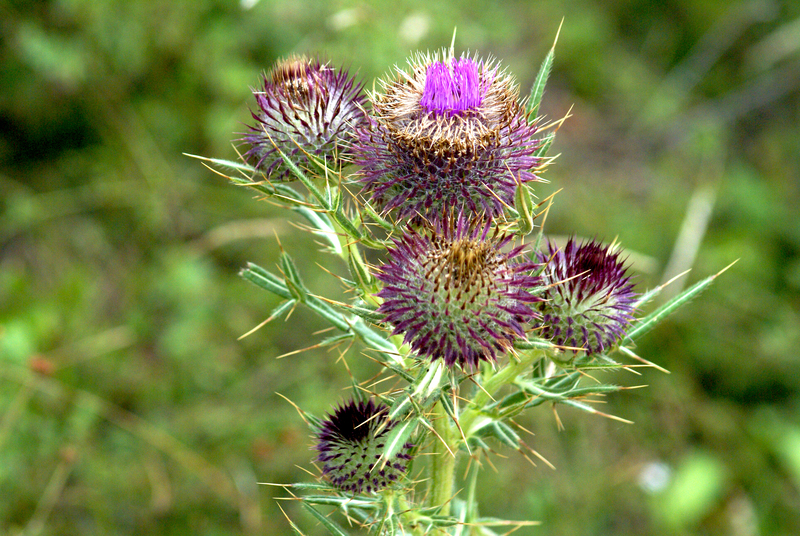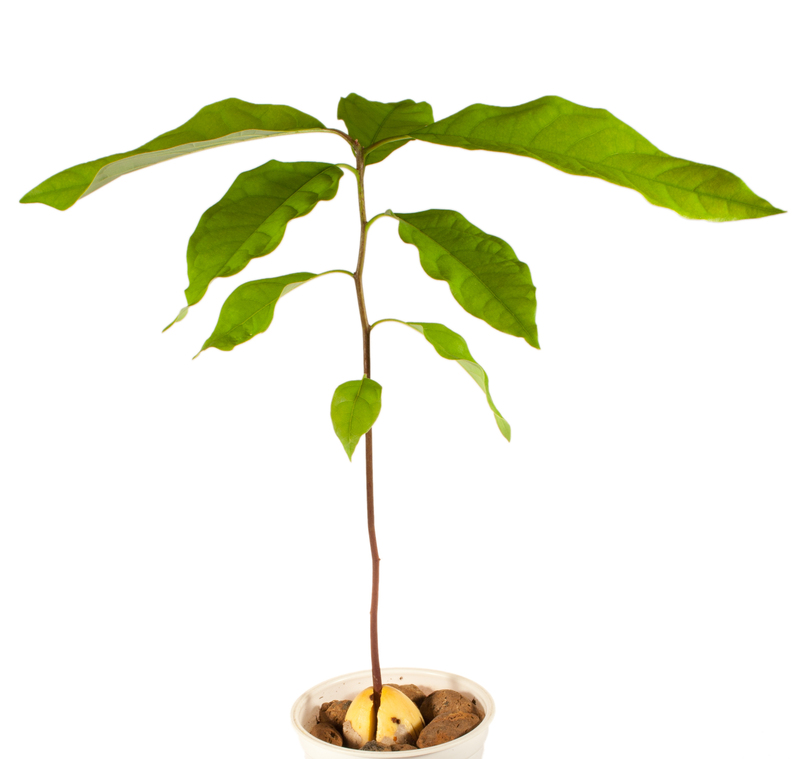Unlock the Secrets to Cultivating a Vibrant Herb Garden
Posted on 26/09/2025
Unlock the Secrets to Cultivating a Vibrant Herb Garden
Would you love to enjoy healthy, aromatic, and freshly picked herbs right from your own home or garden? You're not alone! Growing an herb garden can be a truly rewarding experience. Whether you have a sprawling backyard, a cozy balcony, or simply a windowsill, unlocking the secrets to cultivating a vibrant herb garden is easier than you might think. In this comprehensive guide, we'll explore everything you need to know to nurture a lush, fragrant, and thriving herb garden, from planning to harvesting and beyond.
Why Grow Your Own Herb Garden?
Cultivating a flourishing herb garden is about far more than adding flavor to your favorite dishes. Fresh herbs offer a range of benefits:
- Exceptional Flavor: Nothing compares to the taste and aroma of freshly harvested herbs.
- Health and Well-being: Many herbs are packed with antioxidants, vitamins, and healing properties.
- Cost-Effective: Growing your own herbs can save you money compared to store-bought options.
- Aesthetic Appeal: Herbs enhance the look of any outdoor or indoor space.
- Sustainability: Reducing packaging and transport means a smaller ecological footprint.
Learn the essentials to create a vibrant, productive, and beautiful herb oasis right at home!

Picking the Right Location for Your Herb Garden
Before you start sowing seeds or planting seedlings, it's essential to choose the optimal spot for a thriving herb garden. Here are key considerations:
1. Sunlight Requirements
Herbs generally love the sun--most need at least 6-8 hours of direct sunlight daily. Check your yard, balcony, or windowsill throughout the day to see which areas receive the most light. If growing herbs indoors, placing them near a sunny, south-facing window or using a grow light can make all the difference.
2. Soil Composition and Drainage
Herbs thrive in well-draining soil. Compacted, waterlogged, or clay-heavy soils can quickly lead to root rot and poor growth. Amend your garden soil with organic compost, sand, or perlite as needed, or opt for high-quality, pre-mixed potting soil for container gardening.
3. Accessibility
Pick a spot you'll visit often. If your herb garden is easily accessible, you're more likely to harvest regularly, monitor plant health, and enjoy the rewards!
Choosing the Best Herbs for Your Garden
When planning your herb garden, select varieties that will thrive in your local climate and suit your culinary or medicinal needs. Here's a list of popular herbs ideal for beginners and seasoned gardeners alike:
- Basil - For pesto, salads, and garnishing pizzas
- Mint - Refreshing in teas, salads, and desserts
- Rosemary - Perfect for roasting meats and vegetables
- Thyme - Versatile for soups, stews, and roasted dishes
- Parsley - Ideal as a fresh garnish or flavor booster
- Cilantro - Essential in salsas, curries, and Asian cuisine
- Sage - Delicious with poultry and in stuffing
- Oregano - Staple for Italian and Mediterranean recipes
- Dill - Great for pickling, salads, and fish
- Chives - Mild, onion-like flavor for eggs and baked potatoes
Choose a mix of perennial and annual herbs to keep your herb garden vibrant year-round.
Starting Your Herb Garden: Seeds or Transplants?
There are two primary ways to start your herb garden: from seed, or with transplants (nursery-grown young plants). Both methods have their advantages:
- Seeds: More economical, wider selection of varieties, and you can grow organic from the start.
- Transplants: Faster results, less initial care required, good for short or cool growing seasons.
Pro Tip: Some herbs, such as basil and parsley, are easy to start from seed. Others, like rosemary and thyme, take much longer and may be easier to purchase as young plants.
How to Plant Your Herb Garden for Success
1. Preparing the Soil
Healthy, well-amended soil is the foundation for a thriving herb garden. Mix in plenty of organic compost to improve nutrition, structure, and moisture retention. For container gardens, always use a high-quality potting mix.
2. Spacing and Planting Depth
Consult seed packets or nursery tags for optimal spacing, as overcrowded herbs compete for nutrients and light. As a general rule:
- Small herbs (like thyme, chives): 8-12 inches apart
- Medium herbs (basil, cilantro, parsley): 10-16 inches apart
- Large herbs (sage, rosemary, mint): 18-24 inches apart
Plant seeds at the depth indicated on the packet--usually about 2-3 times their diameter. For transplants, dig a hole slightly larger than the root ball and firm the soil around it after planting.
3. Watering Wisely
Herbs generally prefer soils that are kept evenly moist but never soggy. Overwatering is a common mistake--let soil dry slightly between waterings and always use pots with drainage holes for container herbs.
The Secrets to Keeping Your Herb Garden Lush and Healthy
Pinching and Pruning for Vigorous Growth
Regularly pinching and pruning your herbs encourages bushier growth and prevents flowering, which can make leaves taste bitter. With basil and mint, for example, pinch off the top set of leaves each week once the plant has grown several sets.
Fertilizing Your Herbs
Most herbs aren't heavy feeders, but a light application of balanced, organic fertilizer every 4-6 weeks during the growing season promotes lush foliage. Avoid excess nitrogen, which can cause weak growth and dilute flavor.
Mulching
Add a thin layer of mulch (straw, bark, or shredded leaves) around outdoor herbs to conserve moisture, suppress weeds, and regulate soil temperature.
Pest and Disease Control
Vibrant herb gardens can attract pests, including aphids, spider mites, and whiteflies. Choose organic controls:
- Introduce beneficial insects (ladybugs, lacewings)
- Spray with diluted neem oil or insecticidal soap
- Practice crop rotation and good garden hygiene
- Encourage air circulation to prevent fungal diseases
Harvesting Herbs: Tips for Maximum Flavor and Longevity
When to Harvest?
Most herbs are at their peak right before they flower, when their oil content (and thus flavor) is highest. Pick leaves in the morning, after the dew dries but before the sun becomes hot, for the strongest flavor.
Harvesting Techniques
- Use sharp scissors or garden snips to avoid crushing stems.
- Clip just above a leaf node (where pairs of leaves emerge).
- Never remove more than one-third of a plant at a time.
Regular harvesting keeps your herb garden productive, vibrant, and healthy.
Preserving and Storing Herbs for Year-Round Enjoyment
If your herb garden is producing more than you can use fresh, preserve the bounty for off-season use with these methods:
- Drying: Hang small bunches upside down in a dry, airy space, then store in airtight containers.
- Freezing: Chop and freeze herbs in ice cube trays with water or olive oil.
- Infusing: Make flavored oils, vinegars, or butters to capture herbs' essence.
Creative Design Ideas for a Beautiful Herb Garden
Herb gardens aren't just functional--they can be a visual delight! Consider these ideas to enhance the beauty and personality of your herb patch:
- Herb Spirals: Build a spiral mound with stones; place drought-tolerant herbs at the top and water-loving ones at the base.
- Container Combinations: Mix diverse pots of herbs on patios, windowsills, or steps for easy access and aesthetic appeal.
- Vertical Gardens: Grow herbs in wall-mounted planters or hanging baskets when space is limited.
- Themed Gardens: Try a "Pizza Garden" (basil, oregano, parsley), "Tea Herb Garden" (mint, lemon balm, chamomile), or "Medicinal Herbs Corner."
Common Herb Garden Problems and Solutions
-
Herbs Getting Leggy:
- Solution: Move them to a sunnier location or use grow lights, and pinch stems regularly.
-
Yellowing Leaves:
- Solution: Avoid overwatering; improve soil drainage and check for pests.
-
Poor Growth:
- Solution: Check that the soil pH is between 6-7, add compost, and ensure adequate sunlight.
-
Herbs Bolting (Going to Seed Early):
- Solution: Regularly harvest foliage, and keep soil consistent in moisture and nutrients.

Frequently Asked Questions About Vibrant Herb Gardens
Can I grow a herb garden indoors?
Absolutely! Choose herbs that do well in containers, ensure they get at least 6 hours of sun (or supplement with grow lights), and use well-draining potting soil. Great choices for indoor herb gardens include basil, chives, cilantro, parsley, and thyme.
Which herbs are the easiest for beginners?
Basil, mint, chives, and parsley are excellent choices for starters. They grow quickly and are relatively forgiving of minor mistakes.
How often should I water my herbs?
Water when the top inch of soil feels dry. In hot weather or dry indoor environments, container herbs may need daily watering, while established outdoor herbs usually require less frequent attention.
Can I grow herbs together in the same pot?
Yes, if they have similar water and sunlight needs. Mediterranean herbs (rosemary, thyme, oregano, sage) thrive together, while water-loving herbs (basil, cilantro, parsley) should be grouped separately.
Unlock Your Herb Garden's Full Potential: Final Tips for Success
- Engage Your Senses: Touch, smell, and taste your herbs regularly to appreciate the subtle changes as they grow.
- Label Your Plants: Use creative markers or painted stones to identify new varieties and ensure proper care.
- Keep Learning: Each season, experiment with new herb types and growing techniques.
- Share the Bounty: Give surplus herbs to friends and family or swap with neighbors!
- Enjoy the Journey: The real reward is the joy of nurturing life and discovering the endless uses of fresh herbs in your home.
In conclusion, unlocking the secrets to a vibrant herb garden is within everyone's reach--regardless of space, experience, or climate. With a little planning, attention to detail, and the willingness to get your hands dirty, you'll be enjoying abundant, flavorful, and beautiful herbs all year long!
Start today and transform your meals, health, and home with the magic of a vibrant herb garden.
```


